Dust in galaxies
pros and cons for astronomers
Katarzyna Małek
Narodowe Centrum Badań Jądrowych / Laboratoire d’Astrophysique de Marseille
IFJ PAN 21/10/2021



-
a very general introduction
-
how we can calculate the stellar mass in a galaxy
-
dust attenuation



Extremly long introduction
part 1: what do we know about galaxies?
What do we know about galaxies?
-
galaxies are extremely complex objects composed of billions of stars, gas and dust (and dark matter)
-
they are the basic building blocks in the Large-Scale Structure of the Universe.
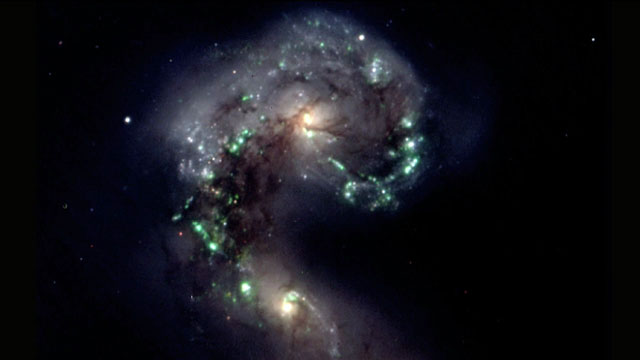
Credit: ESO; VIMOS facility, the "first light" on February 26, 2002. The famous "Antennae Galaxies" (NGC 4038/9), the result of a recent collision between two galaxies.



Credit: ESO; VIPERS
What do we know about galaxies?
-
galaxies are extremely complex objects composed of billions of stars, gas and dust (and dark matter)
-
they are the basic building blocks in the Large-Scale Structure of the Universe.



Credits:
F. Summers, Z. Levay, L. Frattare, B. Mobasher, A. Koekemoer and the HUDF Team (STScI)
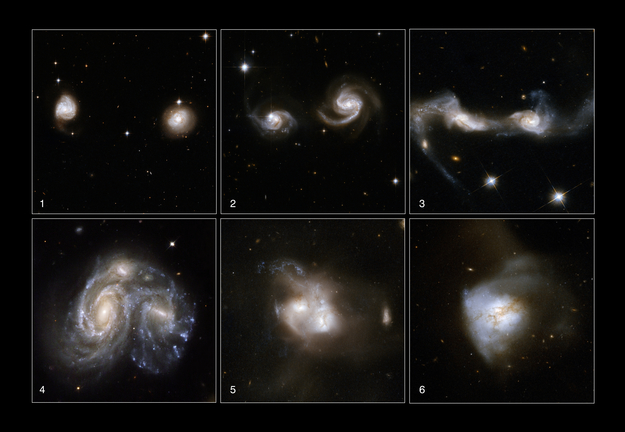
Copyright: NASA, ESA, the Hubble Heritage Team (STScI/AURA)-ESA/Hubble Collaboration and A. Evans (University of Virginia, Charlottesville/NRAO/Stony Brook University), K. Noll (STScI), and J. Westphal (Caltech)








No matter if we are observing the Milky Way, its nearby neighbors, or very distant galaxies, we know that they are similar objects at different stages of evolution.



Extremly long introduction
part 2: galaxy's classification
classification of galaxies into groups of objects with similar physical properties
galaxy evolution
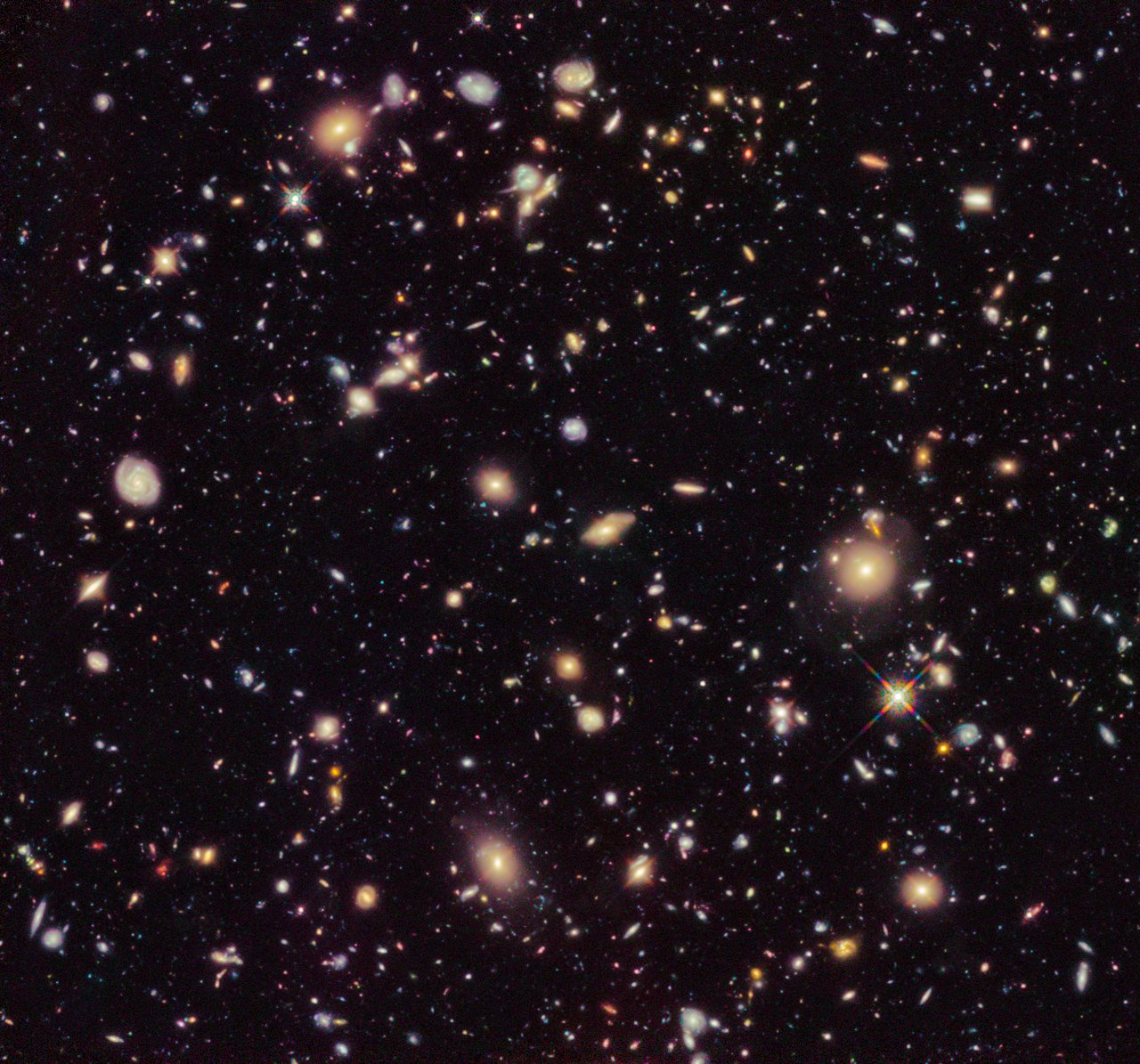
Credit: NASA, ESA, R. Ellis (Caltech), and the HUDF 2012 The Hubble Ultra Deep Field 2012



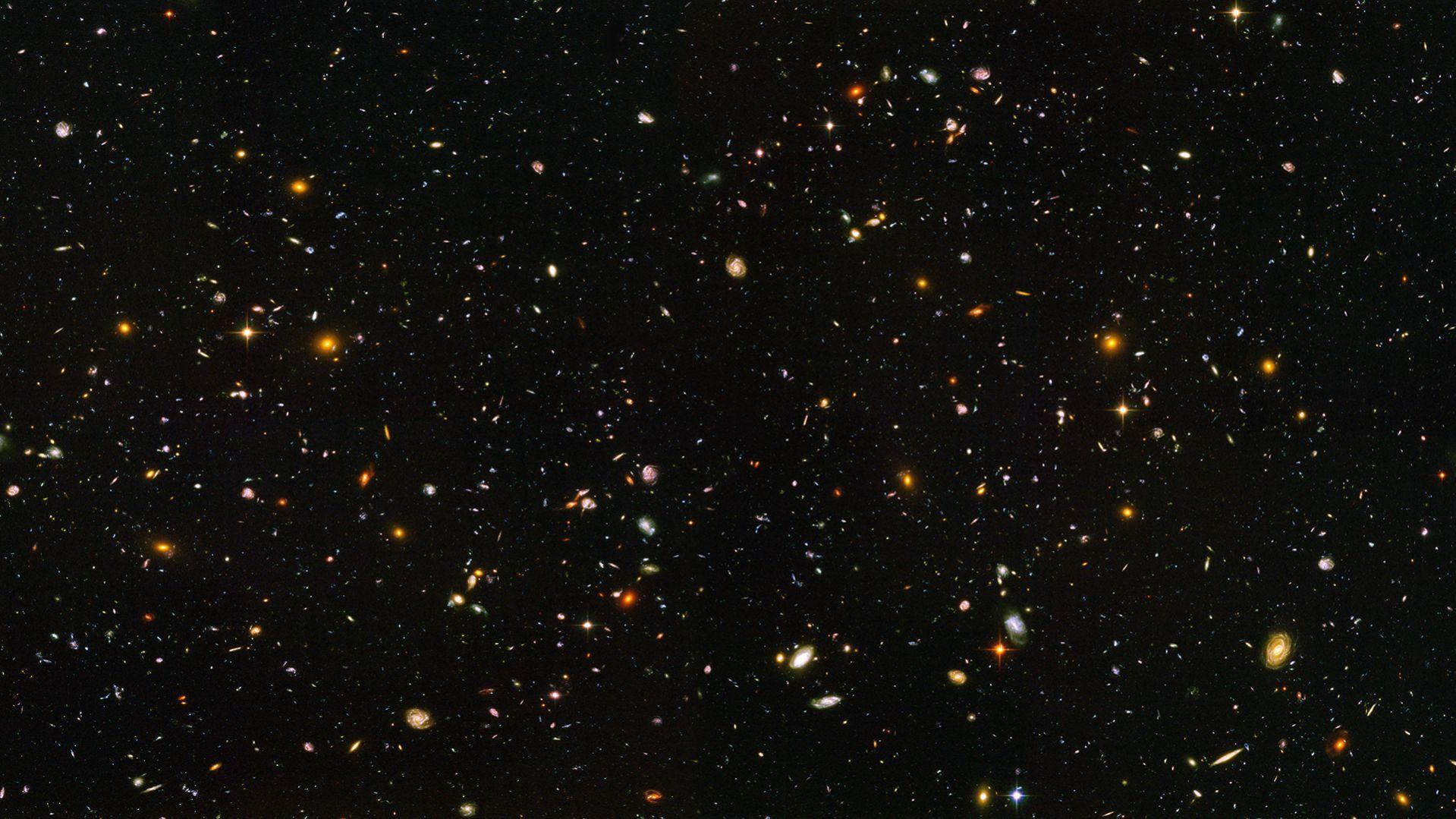
The main physical parameters used to classify galaxies:
- morphology (mostly used in the nearby Universe)
- stellar mass M✸,
- star formation rate, SFR,
- redshift, z
Morphology
nearby Universe (special observations)

Credit: Galaxy zoo



Morphology
high-z Universe
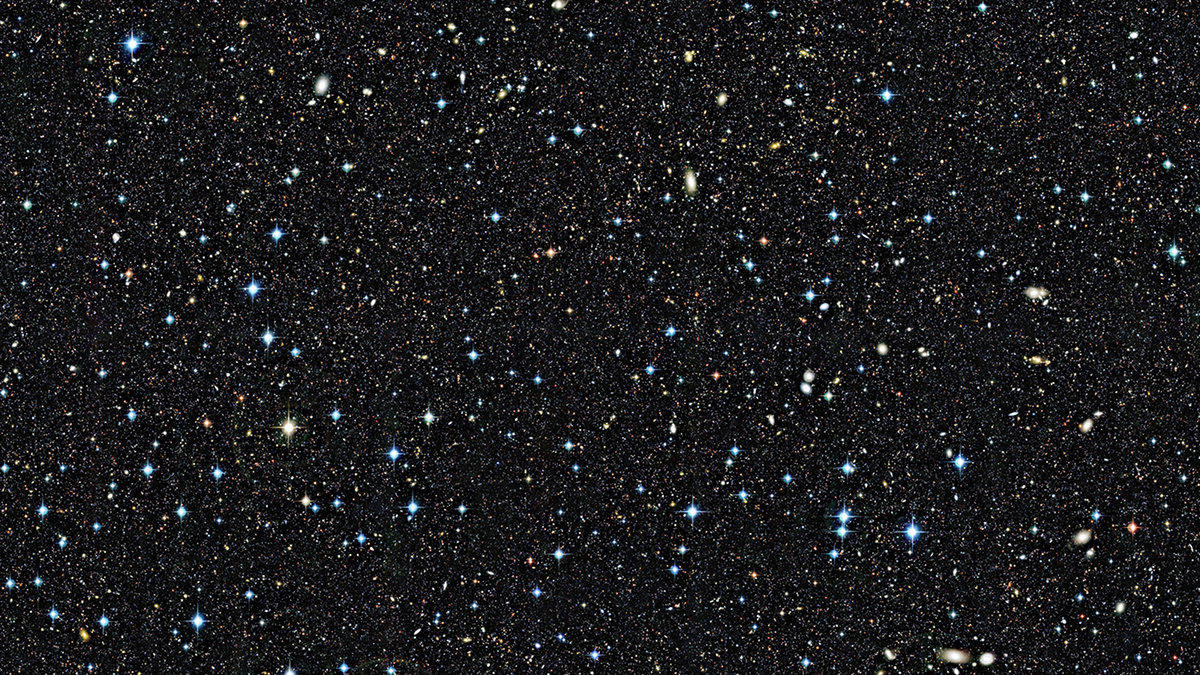
Credit: Canada-France-Hawaii Telescope Legacy Survey.



Morphology
high-z Universe

Credit: Canada-France-Hawaii Telescope Legacy Survey.
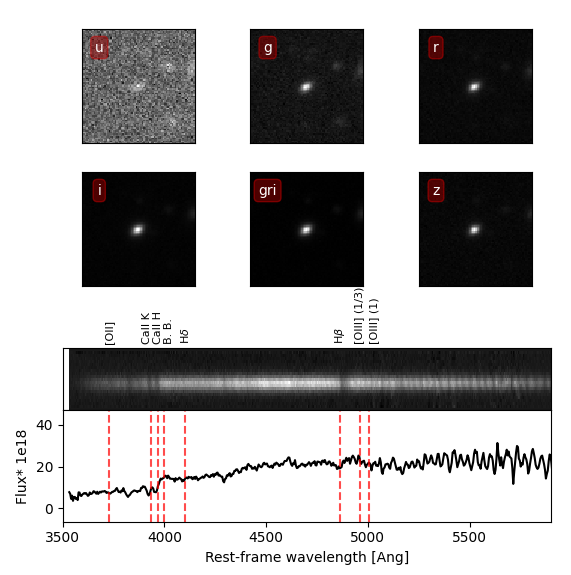
z=0.56 (the light travel time ~6 Gyr)
Credit: CFHTLS, VIPERS, K.Lisiecki



stellar mass (M✸) is the mass of all stars (young and old) in the galaxy
Star Formation Rate (SFR) is the total mass of stars formed per year.
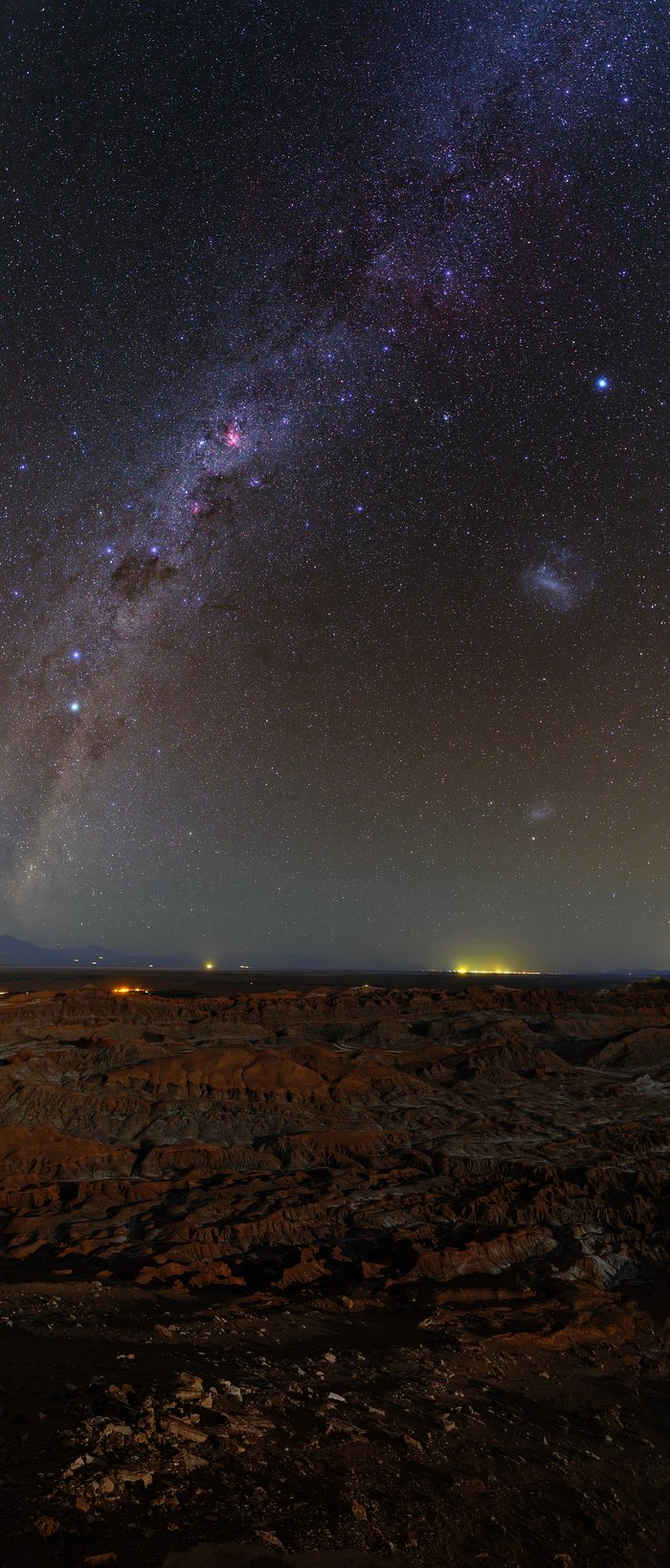
This portrait view panorama shows our colourful Milky Way stretch above the Atacama Desert. Taken during the ESO Ultra HD Expedition.
Credit: SO/B. Tafreshi (twanight.org)
The lightest galaxies are around a billion solar masses, while the heaviest are 30 trillion, or 30,000 times more massive. The Milky Way's mass of 1.5 trillion solar masses is fairly normal for a galaxy of its brightness
M✸ & SFR can be roughly counted by counting individual stars (every year).

This portrait view panorama shows our colourful Milky Way stretch above the Atacama Desert. Taken during the ESO Ultra HD Expedition.
Credit: SO/B. Tafreshi (twanight.org)
The whole procedure seems quite easy
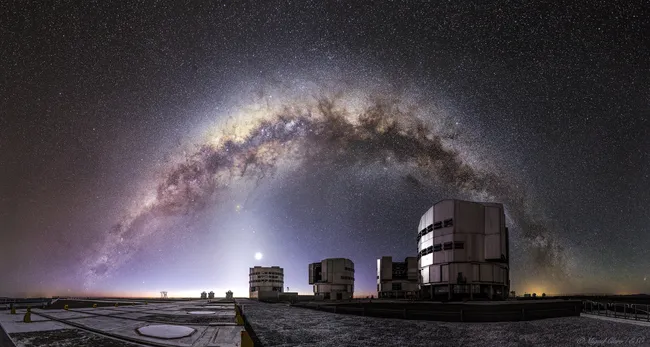
The entire arc of the Milky Way can be seen in the southern sky in this view from the European Southern Observatory's Very Large Telescope at the Paranal Observatory in Chile's Atacama Desert. (Image: © Miguel Claro).
but obviously it's not doable
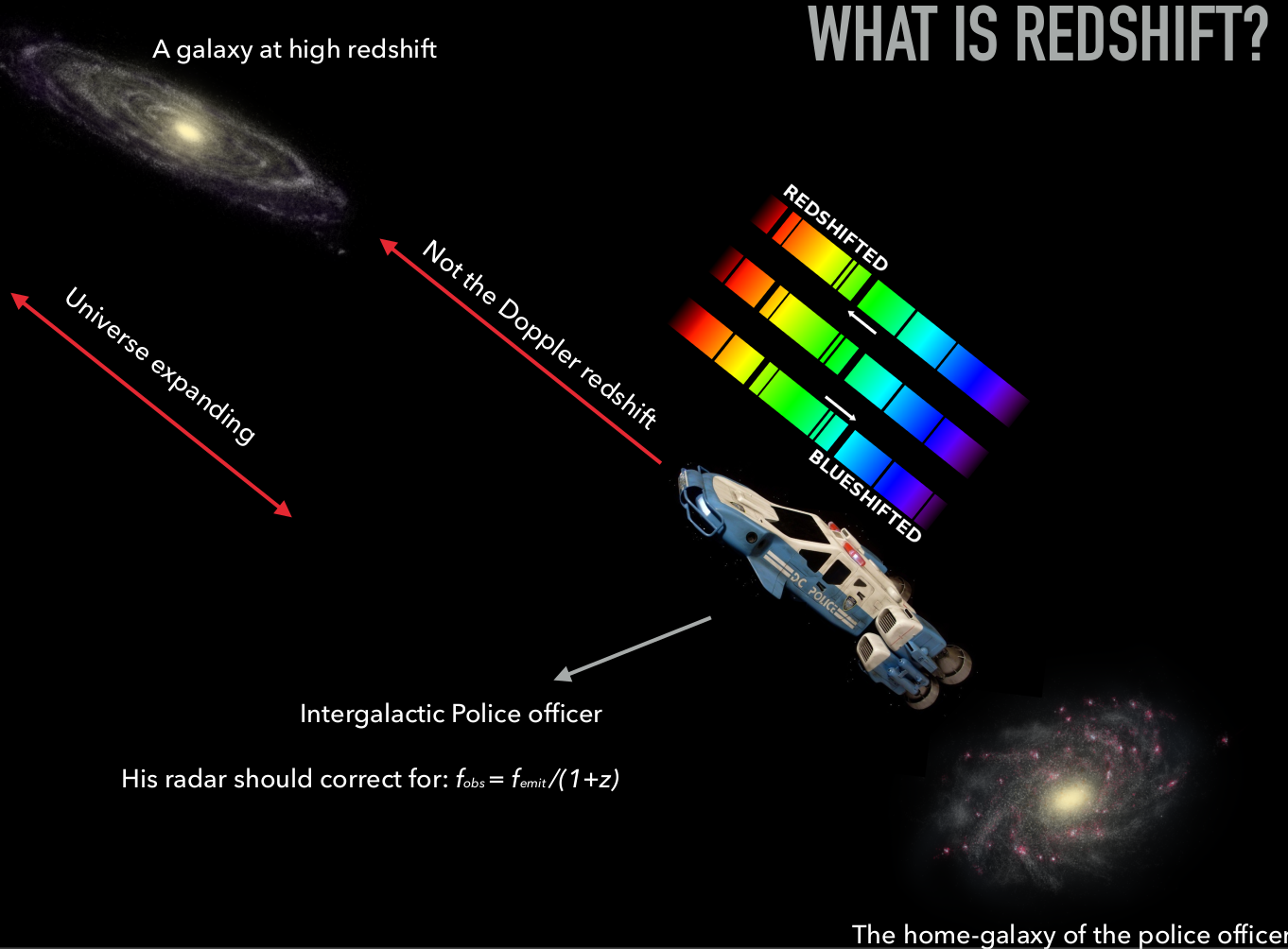
Credit: Mahmoud Hamed
Redshift?
but nonetheless there are studies on the star-forming activity of galaxies

Credit: CANDELS collaboration
So how do we count the stars?








young stellar populations
starsze populacje gwiazdowe
Polycyclic aromatic hydrocarbon
starsze populacje gwiazdowe
old stellar populations
hot dust
cold dust
synchrotron emission (AGN)
hot gas






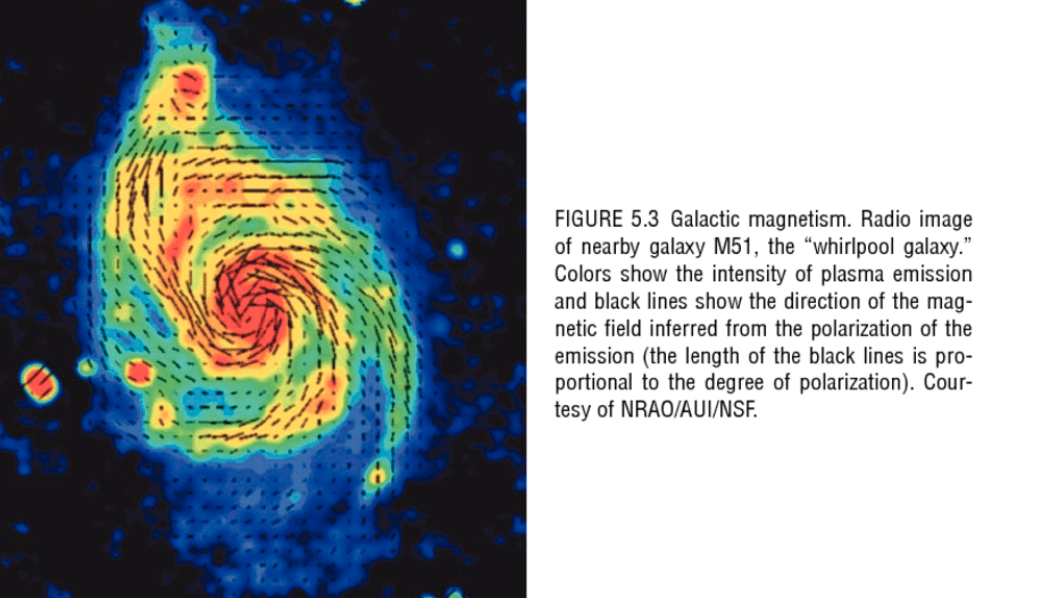
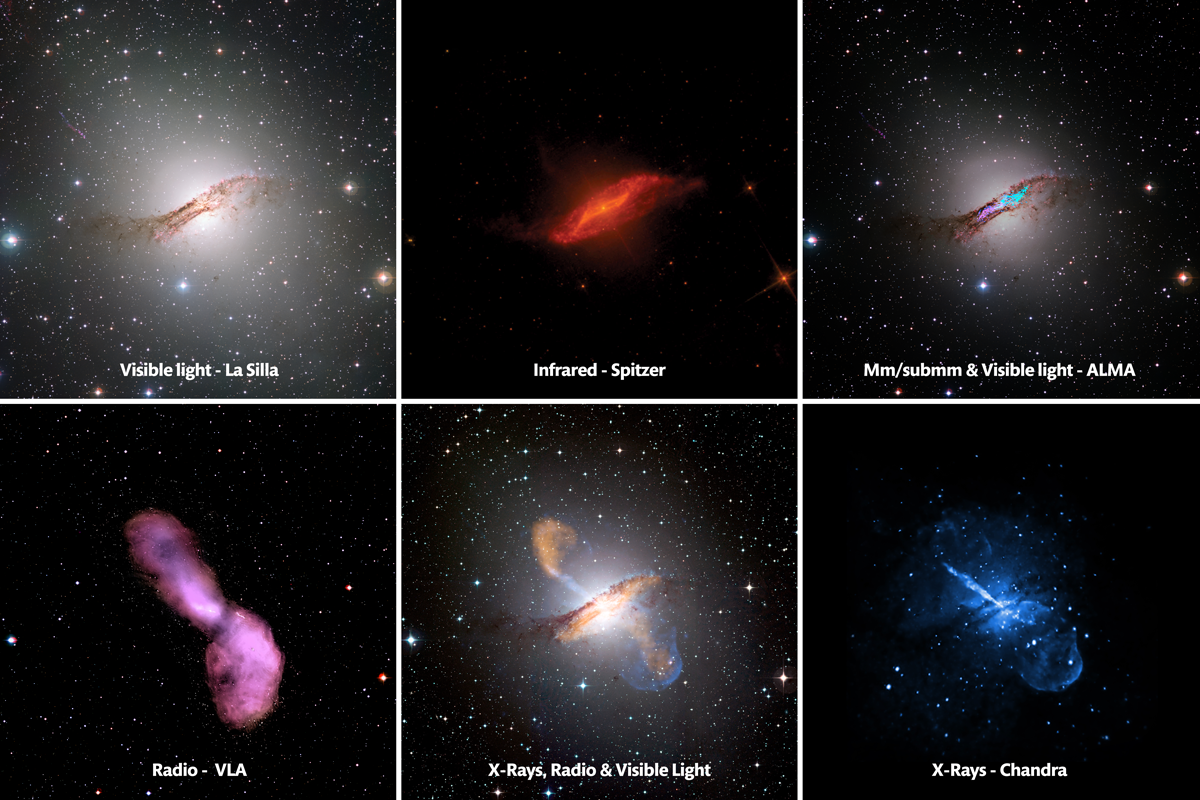
Credit: https://www.almaobservatory.org/
Centaurus A (NGC 5128)

Credit: https://www.almaobservatory.org/
Centaurus A (NGC 5128)

Credit: https://www.almaobservatory.org/
Centaurus A (NGC 5128)

Credit: https://www.almaobservatory.org/
Centaurus A (NGC 5128)

Credit: https://www.almaobservatory.org/
Centaurus A (NGC 5128)

Credit: https://www.almaobservatory.org/
Centaurus A (NGC 5128)
?

Credit: https://www.almaobservatory.org/
Centaurus A (NGC 5128)
Colour composite image, revealing the lobes and jets originates from the active galaxy’s central black hole. This image was obtained with three instruments:
- submm (870micron) LABOCA/APEXPEX (Chile)
- X ray data from Chandra X-ray Observatory
- optical observations (2.2-m WFI, MPG/ESO, Chile) show the background stars and the galaxy’s characteristic dust lane in close to "true colour".
Centaurus A (NGC 5128)

Credit: ESO Centaurus A LABOCA
astrophysics full of colours!

GALEX (UV)
(Credit: NASA)
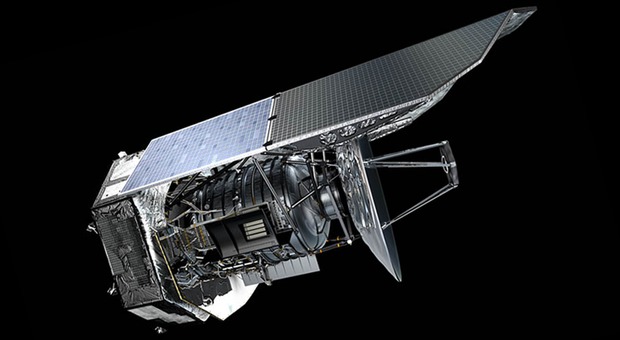
Herschel( Credit: NASA)

VLT (optical) (Credit: ESO)
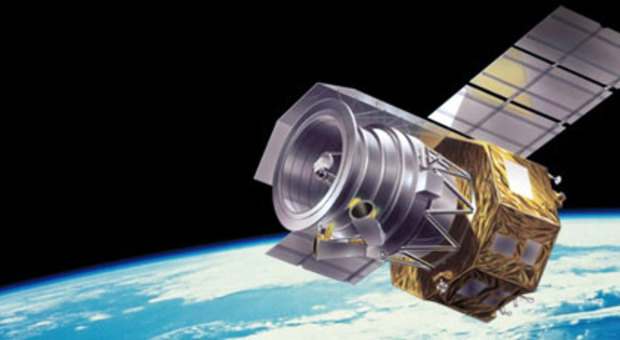
AKARI (MIR-FIR)
(Credit: JAXA)
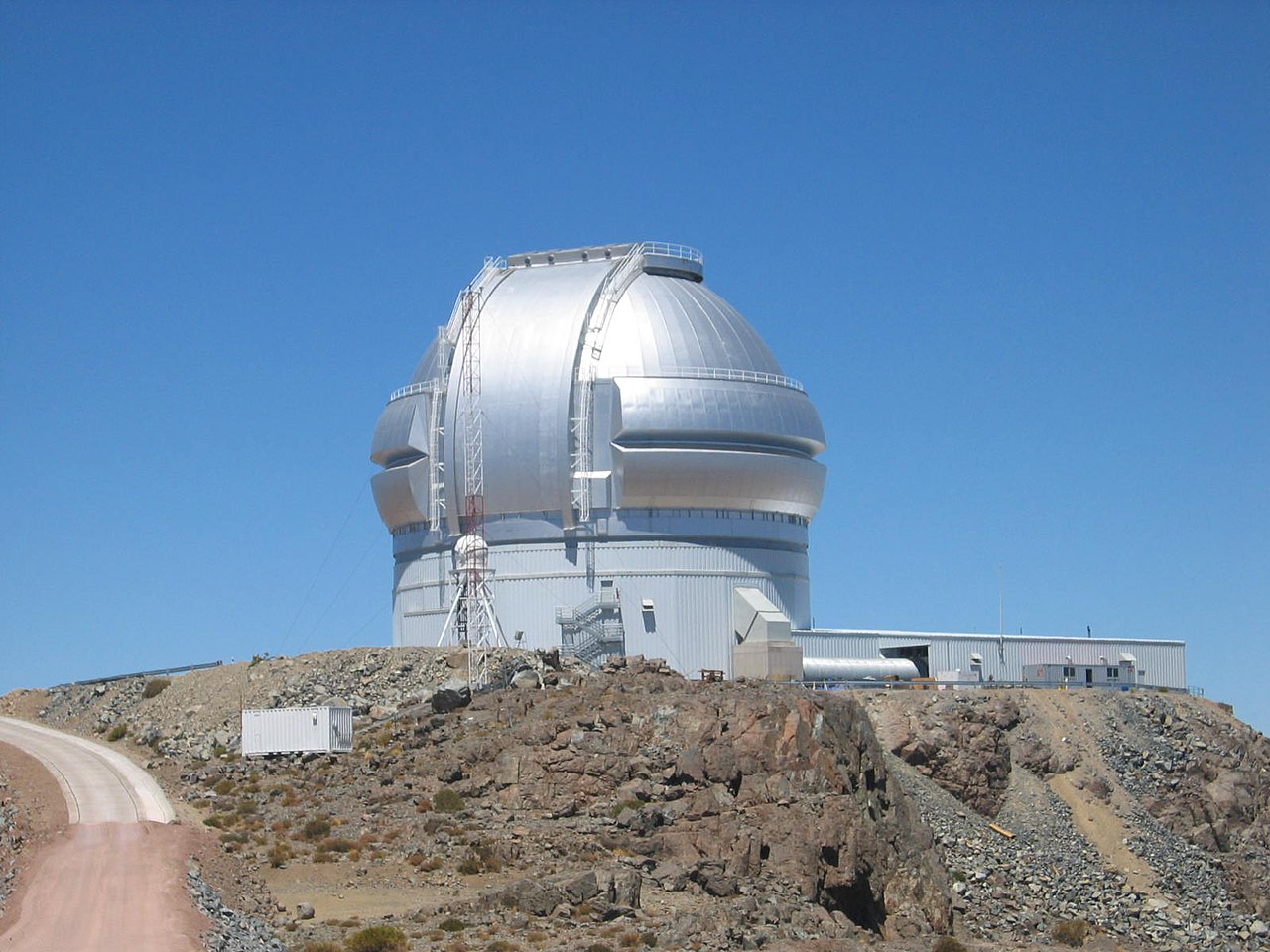
GEMINI (opt)
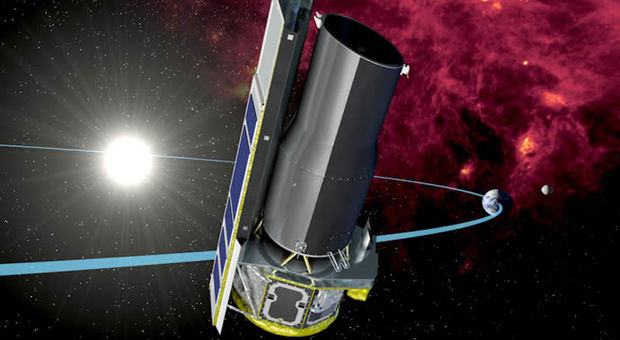
Spitzer (NIR-MIR)
(Credit: NASA)
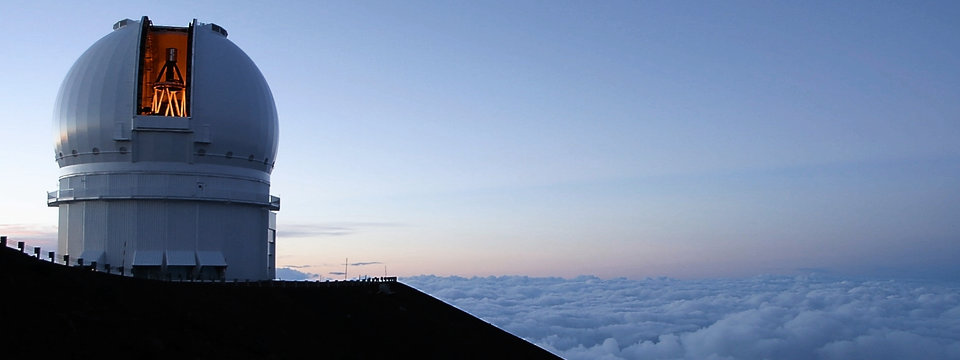
CFHT (Credit: cfht)

Credit: ESO/WFI (Optical); MPIfR/ESO/APEX/A.Weiss et al. (Submillimetre); NASA/CXC/CfA/R.Kraft et al. (X-ray)
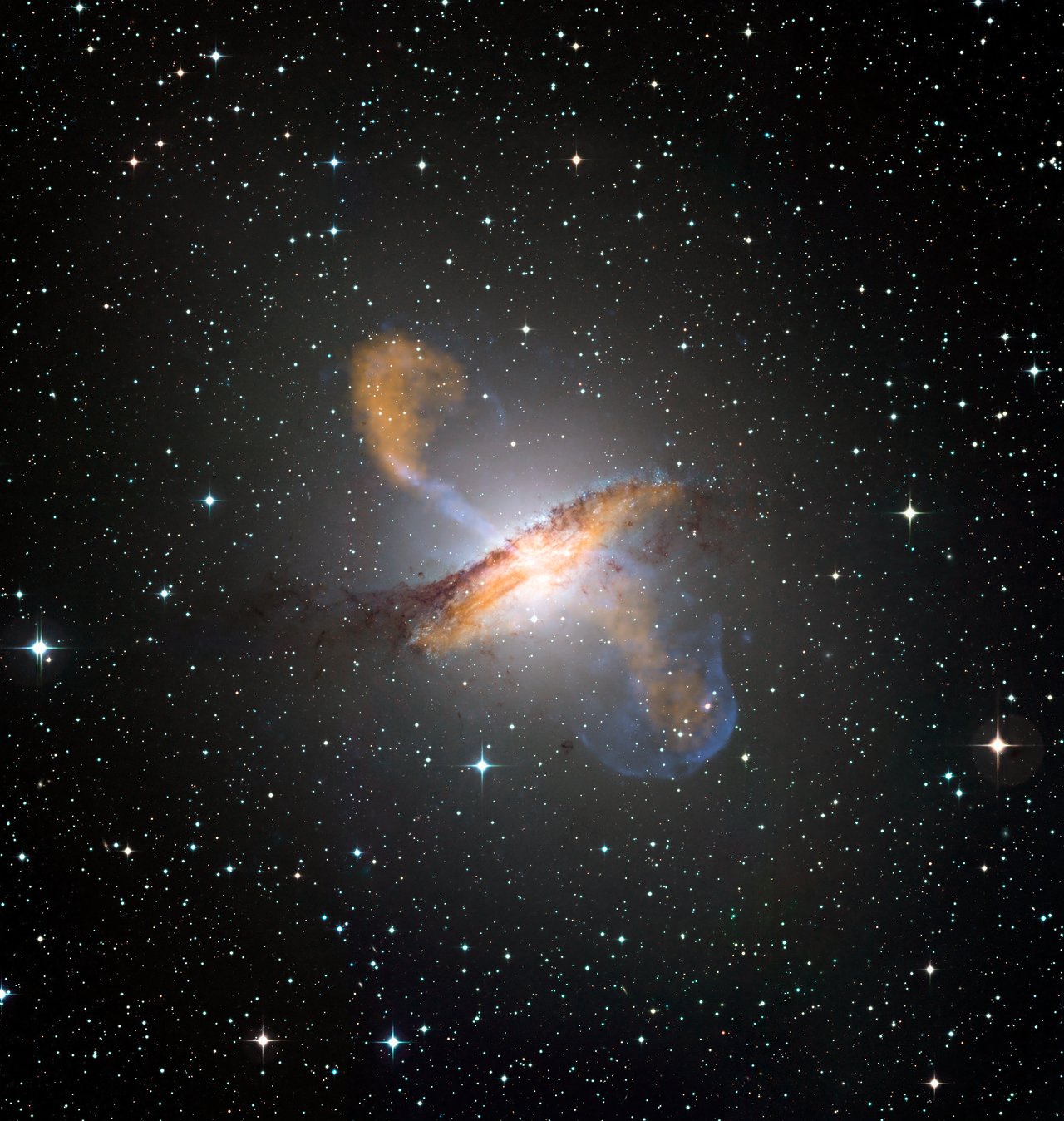
composite image of Centaurus A (z=0.0008)
870-micron submm LABOCA on APEX
X-ray: Chandra X-ray Observatory
visible: Wide Field Imager 9WFI) on the MPG/ESO 2.2 m telescope (dust lane and stars)


Credit: ESO/WFI (Optical); MPIfR/ESO/APEX/A.Weiss et al. (Submillimetre); NASA/CXC/CfA/R.Kraft et al. (X-ray)

composite image of Centaurus A (z=0.0008)
870-micron submm LABOCA on APEX
X-ray: Chandra X-ray Observatory
visible: Wide Field Imager 9WFI) on the MPG/ESO 2.2 m telescope (dust lane and stars)
KM+2018

Brown+2014 (NGC 3190)


KM+2018

Brown+2014 (NGC 3190)
Efstathiou, KM+2021
A hyperluminous obscured quasar at a redshift of z ~ 4.3



Credit: Mahmoud Hamed




Credit: Mahmoud Hamed




Dust absorbs part of the UV (0,1- 0,4μm) radiation from young, massive stars and then re-emits the energy in the IR rage (IR, 8-1000μm ).
Spectral energy distribution of galaxies
The energy distribution of a galaxy as a function of wavelength is called the galaxy energy spectrum (SED)

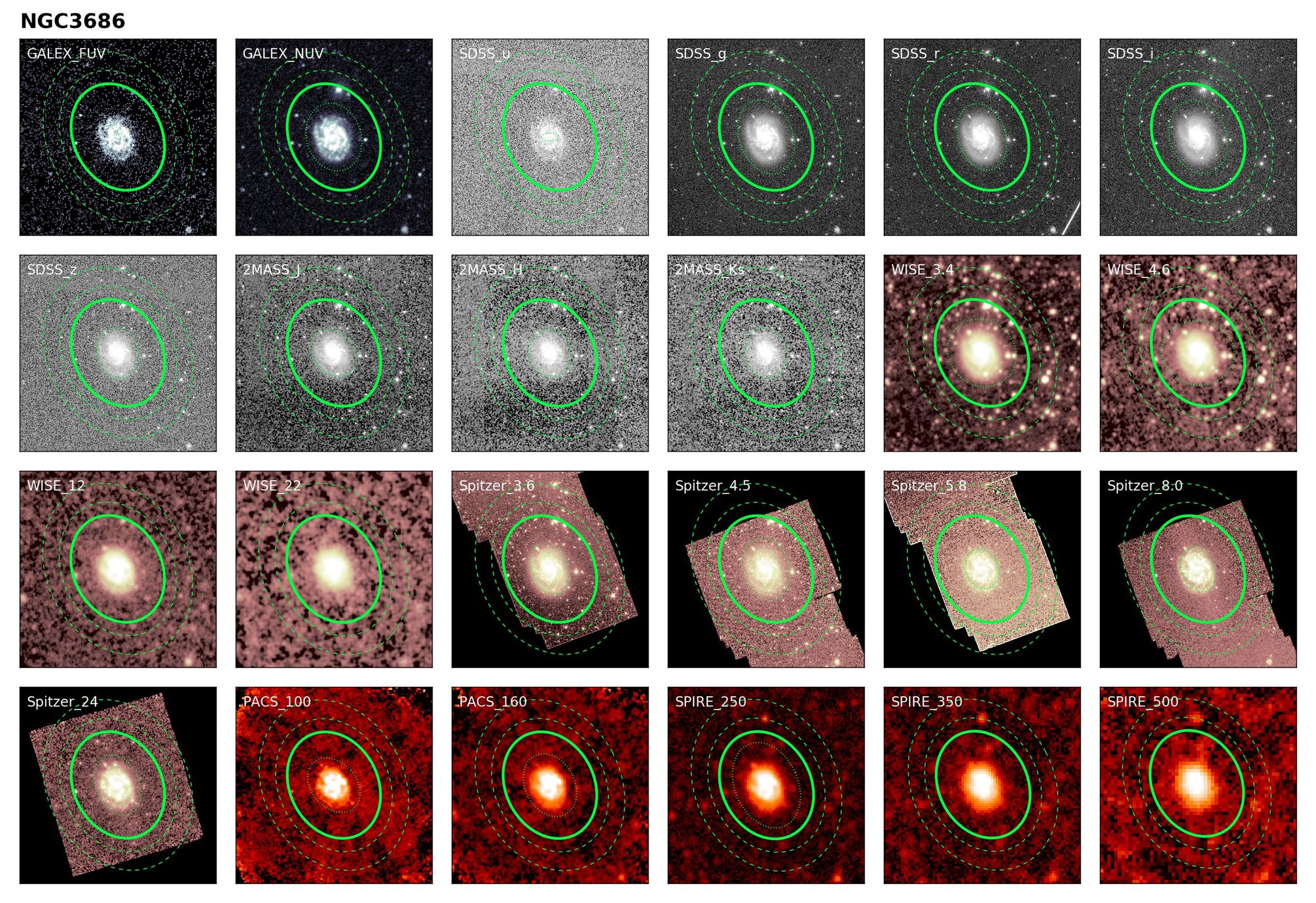
Multiwavelength imagery of DustPedia galaxy NGC 368 and Six of the enigmatic blue and dusty gas rich galaxies revealed in Clark et al., 2015




Credit: Mahmoud Hamed




modelling of spectral energy distribution
In fact, it should be very simple - we have satellites, large telescopes, networks of radio observatories ...
... but we have also dust in galaxies (and on the way between a galaxy and Earth...)
DUST
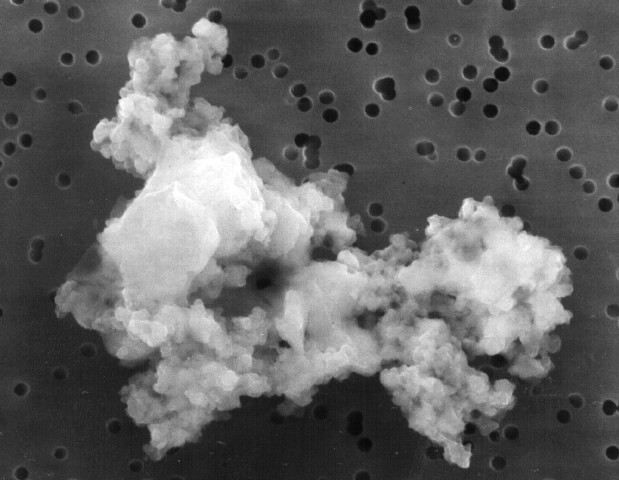
Credits: NASA
a key component of the interstellar medium (ISM)
- dust particles are formed as a product of stellar evolution,
- they are formed in the environment of evolved stars and then they are ejected into the interstellar medium,
- their sizes range from a few nm to a few μm,
- the main building block is carbon, including graphite + silicate,
- its presence in galaxies is "noticeable" as
- emission in the IR wavelenghts,
- modification of the stellar continuum (UV - NIR)

Dust absorbs part of the UV (0,1- 0,4μm) radiation from young, massive stars and then re-emits the energy in the IR rage
(IR, 8-1000μm ).
Without dust, we don't have new stars!



Credit: M. Hamed



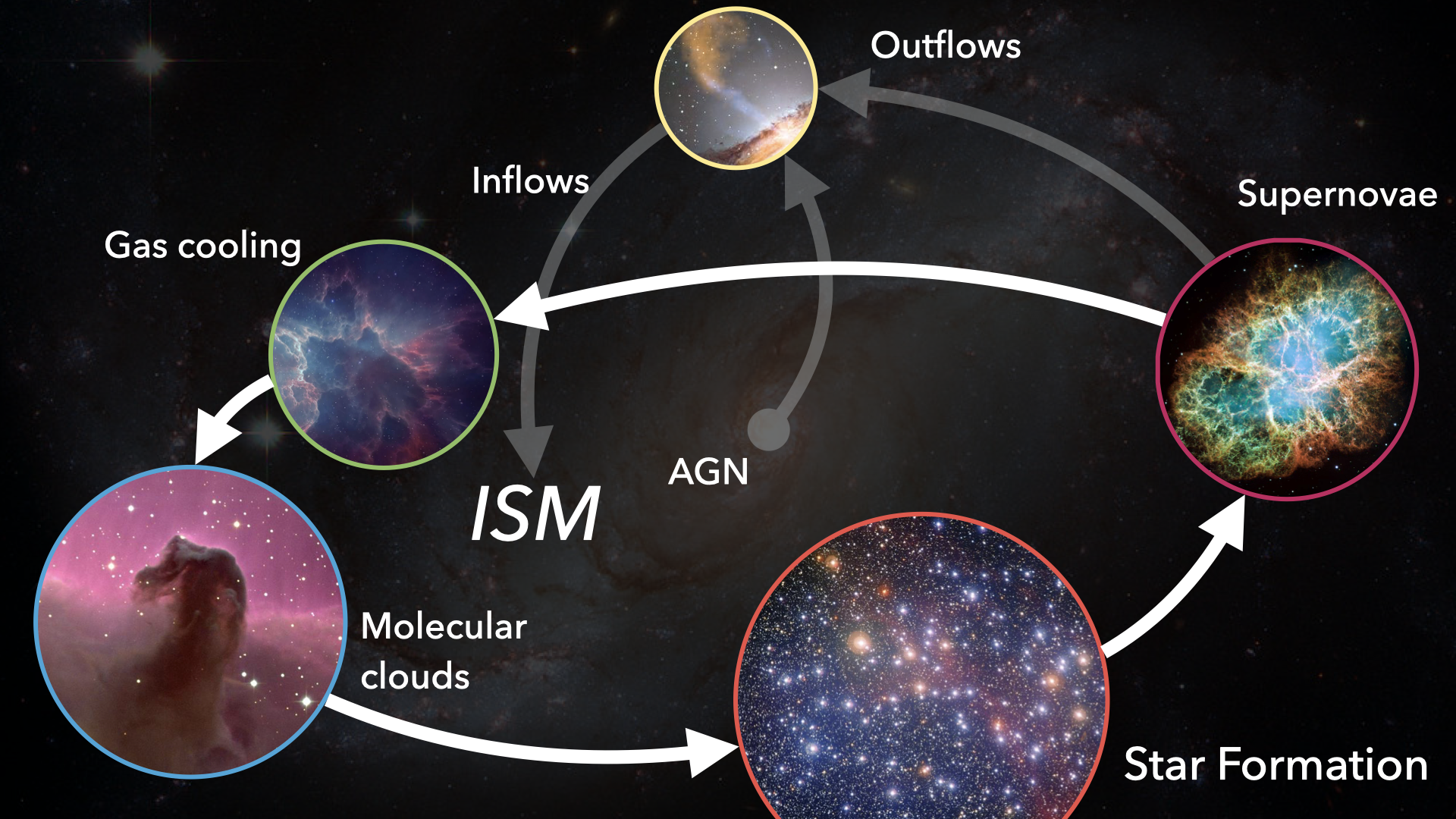
Credit: M. Hamed




Credit: D. Donevski




dust attenuation





we have different dust attenuation models to use..

all of them are extremly simple ...
Are all attenuation laws interchangeable?
To reply to that question in static way, we need a statistically important, sample of galaxies with reach photometrical measurements, with farIR data, spread out in a wide redshift range.



How to observe and analyse dust properties in the high-z Universe?

+
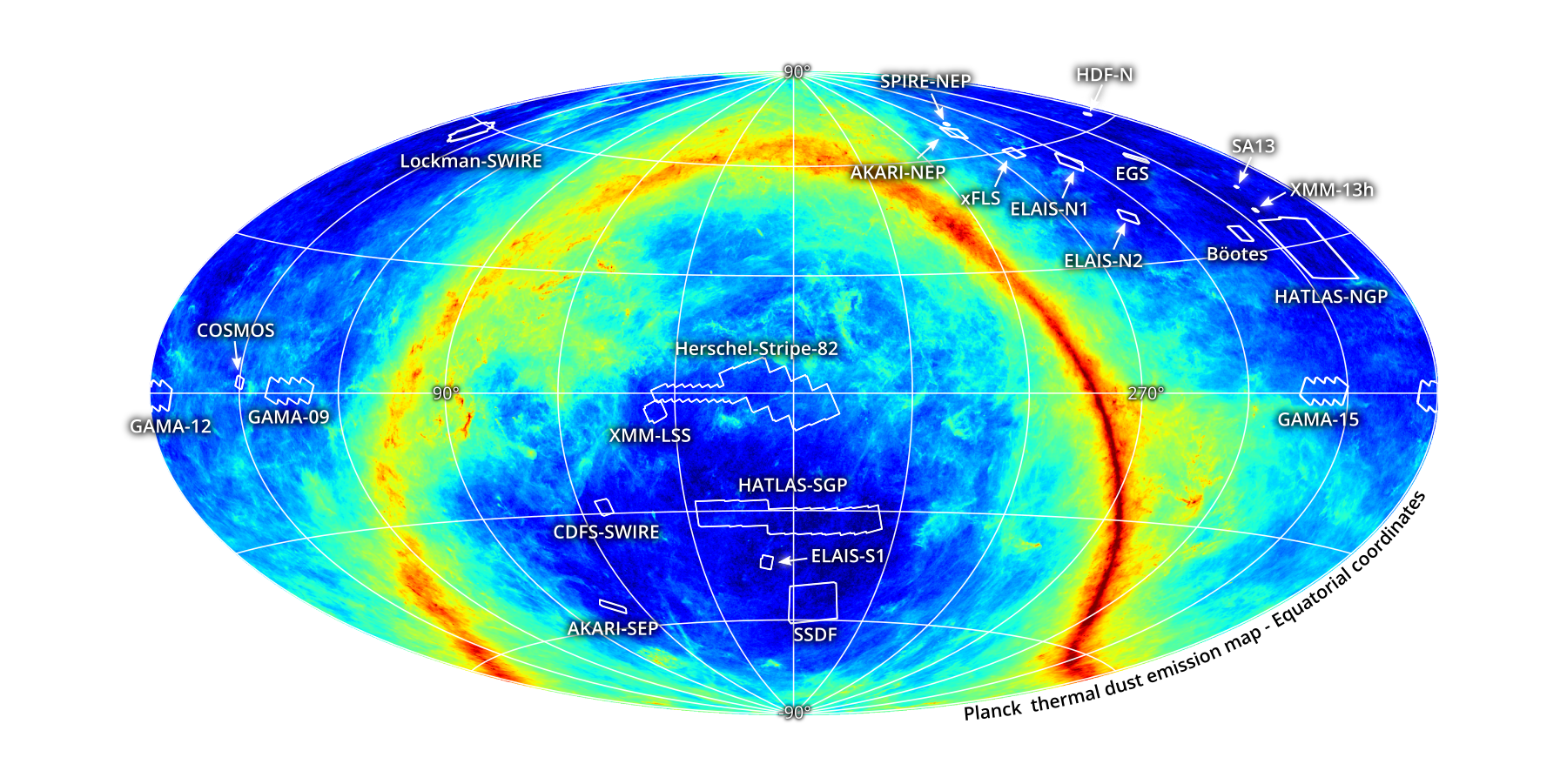

FIR
submm

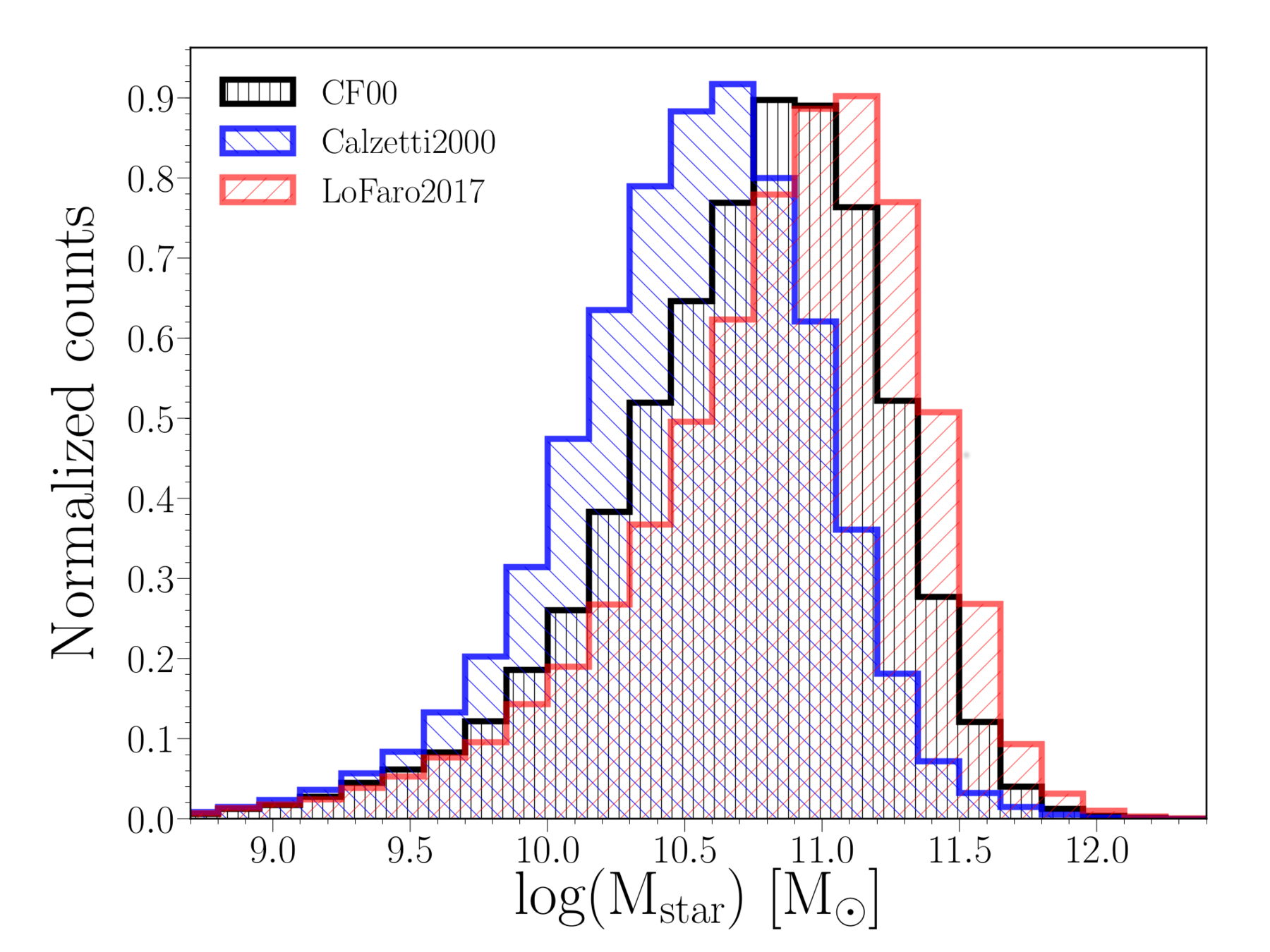
Małek+2018

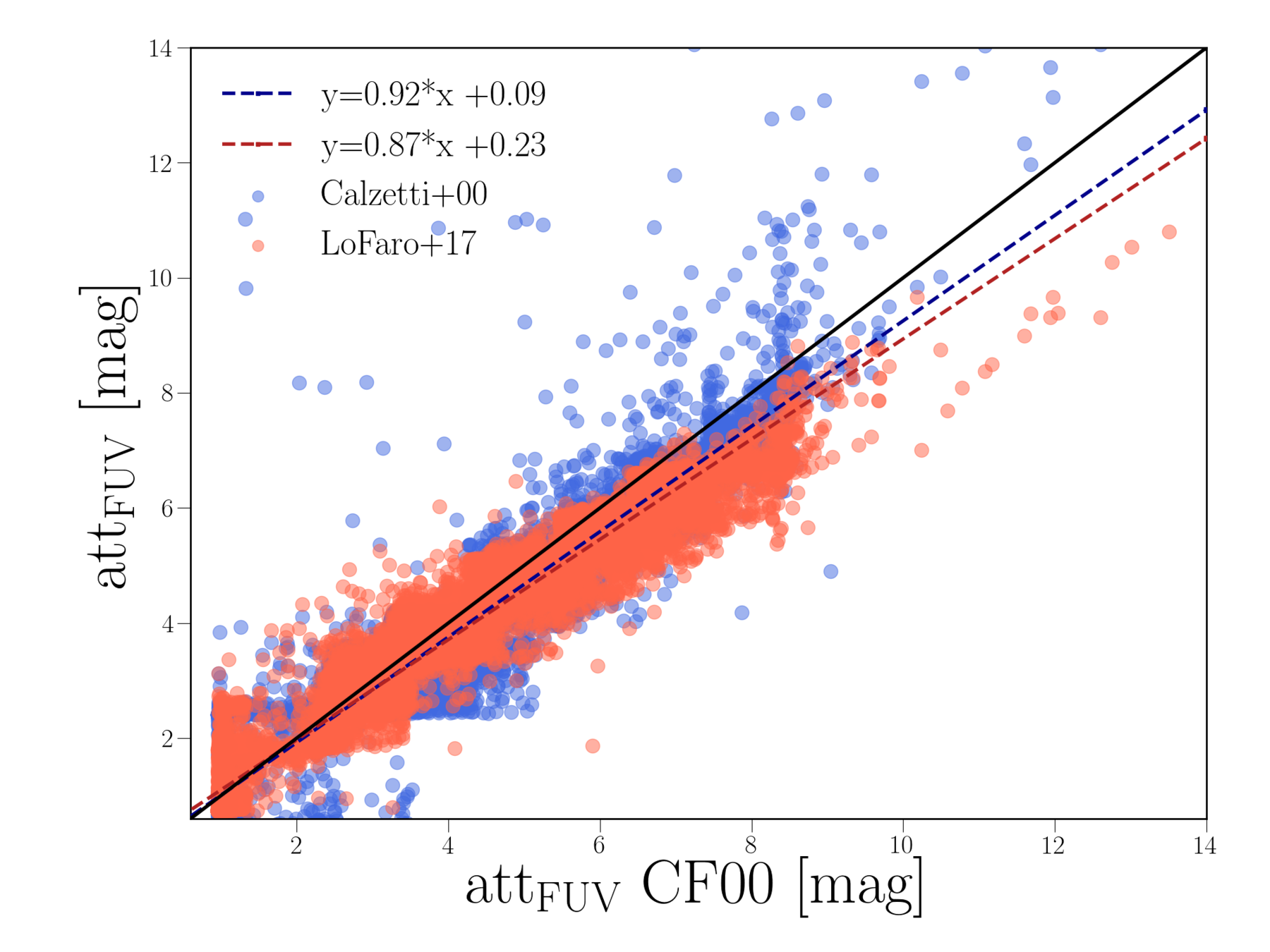

Astarte & Adonis (z~2, the age of the Universe at that time~3.316 Gyr.).
Hammed+2021

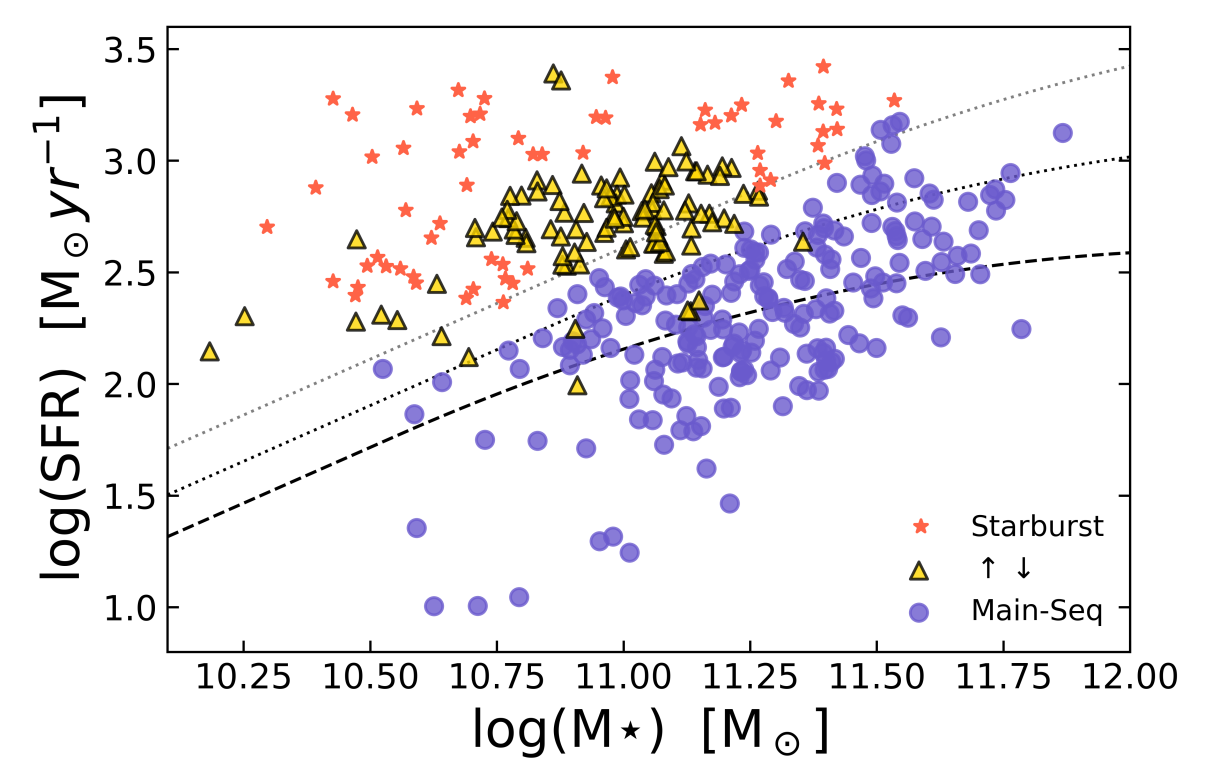
Hammed+in prep
Slowly we are opening new windows of modelling galaxy by using ...

Toba et al., 2021

x-ray eROSITA



Guang, KM et al., submitted

Radio LOFAR



KM preliminary results




Radio LOFAR
X-ray Chandra
Some interesting results
Infrared observations are crucial to understand it
Madau and Dickinson 2014
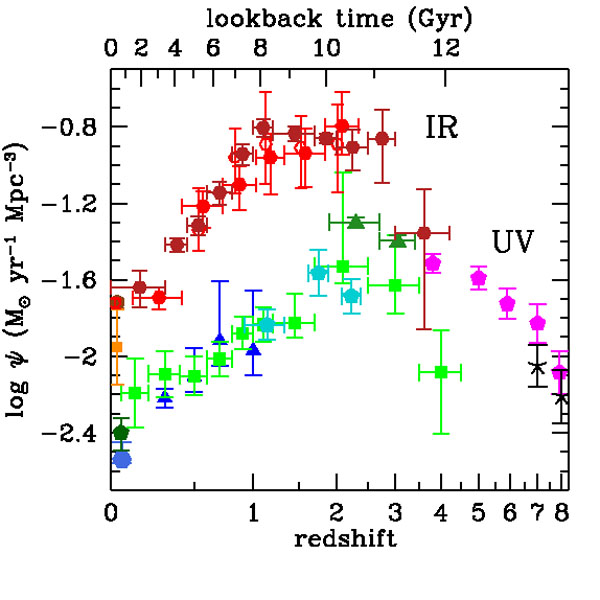

discovery of a giant black hole hidden in a galaxy that existed 1,4 Gyr after the Bing Bang!
Efstathiou, Małek+2021

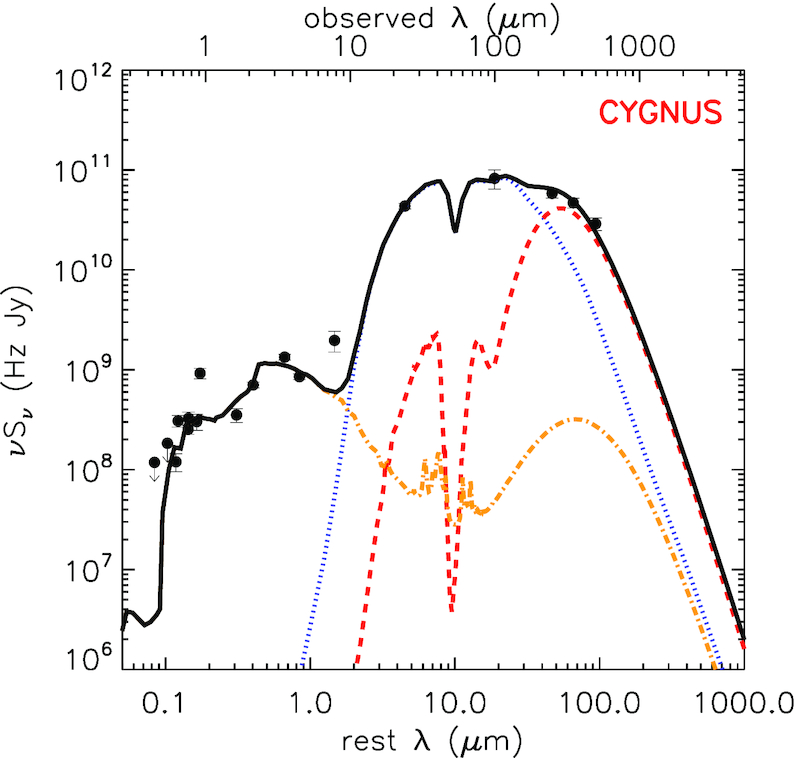
What is the influence of dust attenuation on the main physical parameters of galaxies?
What are the properties of dusty, giant galaxies formed just a few billion years after the Big Bang?
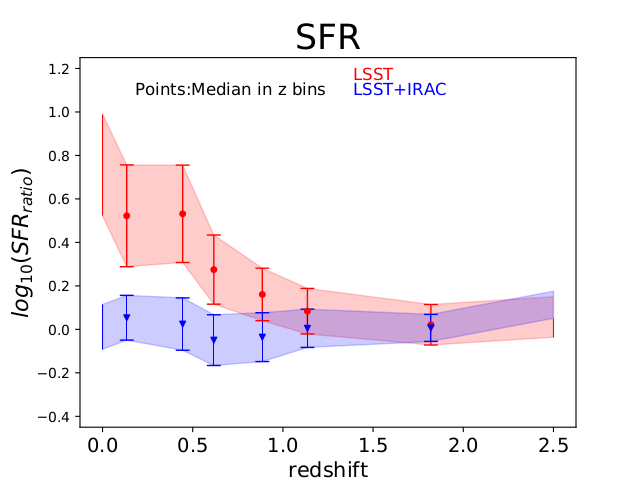
redshift
Riccio, Małek+ 2021
LSST optical data (ugriz)
Legacy Survey of Space and Time
starting 2022 - 10 years of observations, ~60 petabytes of pictures and 15-petabytes of data, 20 terabytes of data/night
Text
LSST + auxiliary IR data
The growth of dust in young but already metal-rich galaxies (z~3-4) is dominated by the growth of particles due to their collisions with gas
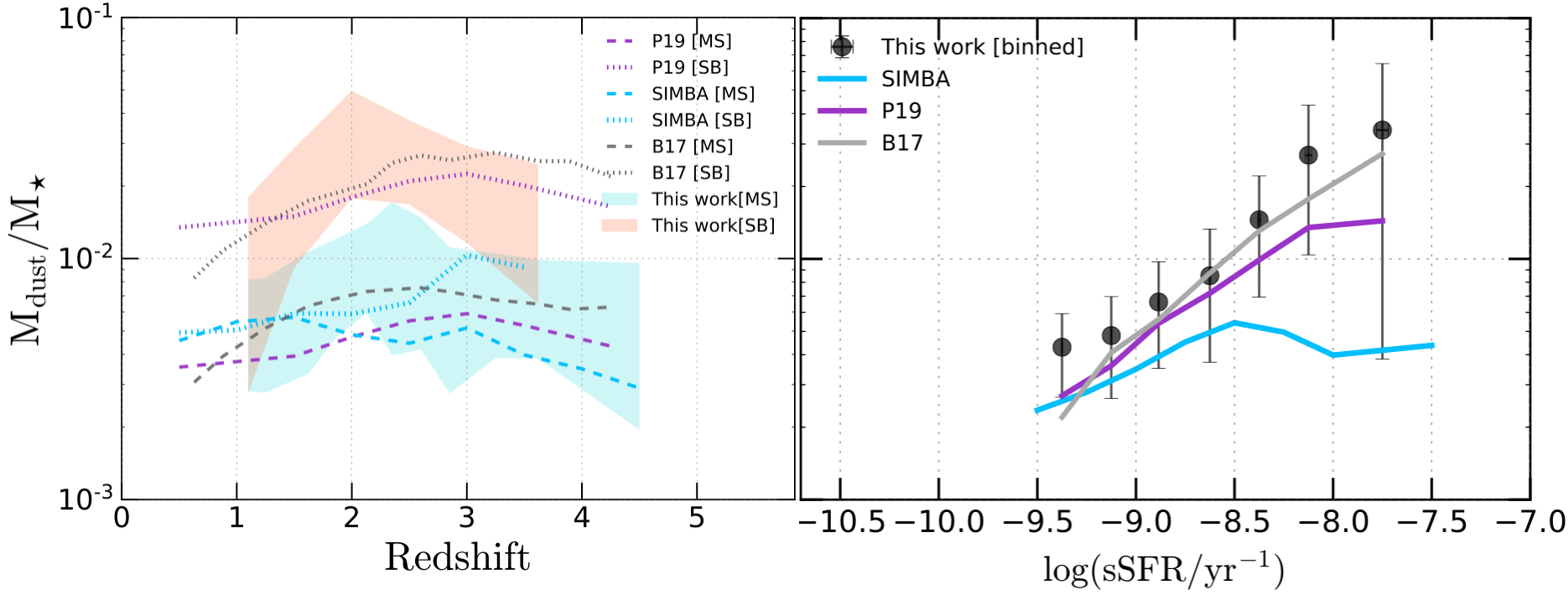
Donevski, Lappi, Małek+2021
What is the influence of dust attenuation on the main physical parameters of galaxies?
What are the properties of dusty, giant galaxies formed just a few billion years after the Big Bang?

+


FIR
submm

+

radio
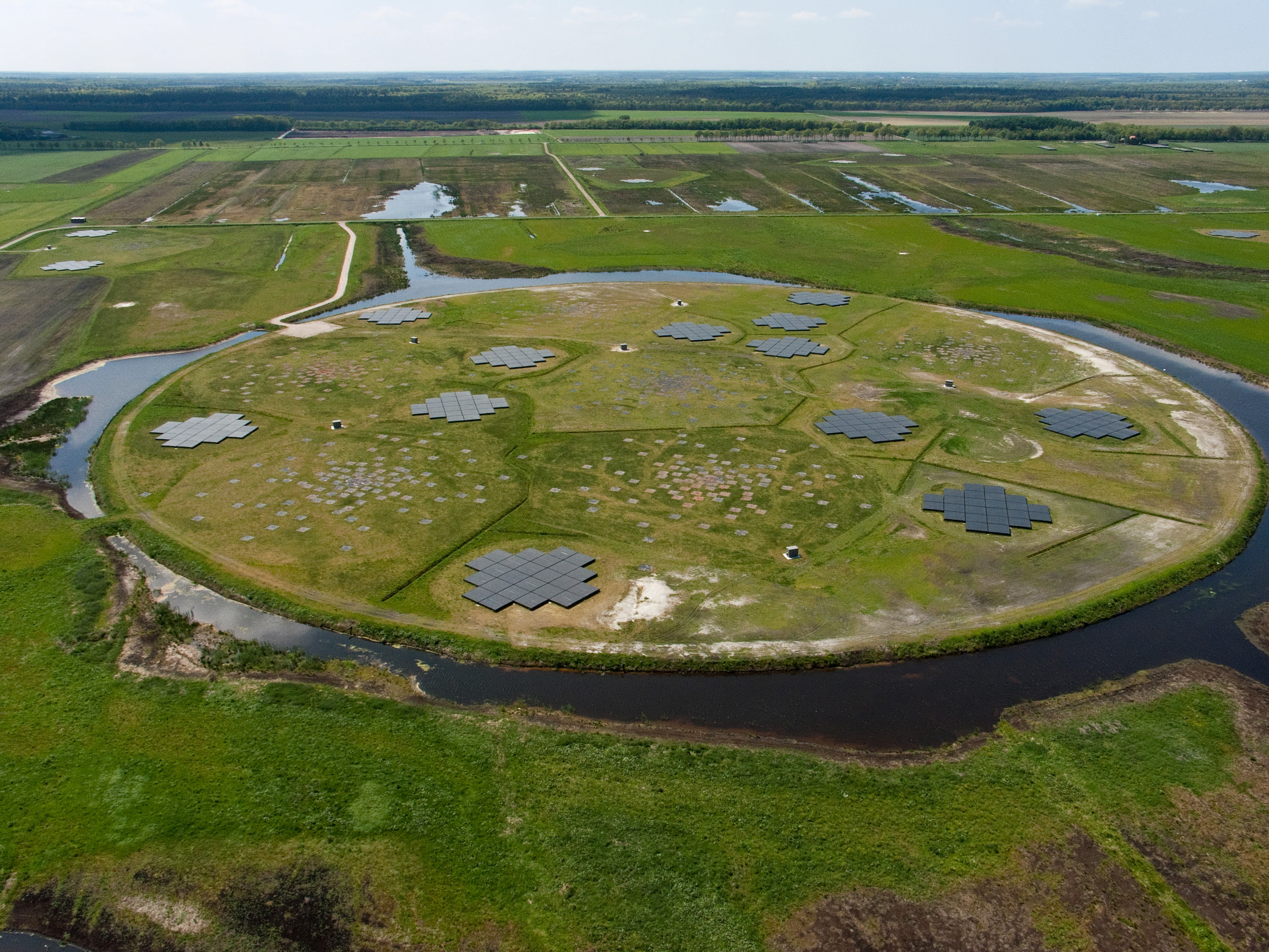
LOw Frequency ARray

LOFAR is the world’s leading telescope of its type. It is operated by ASTRON, the Netherlands Institute for Radio Astronomy, and coordinated by a partnership of 9 European countries: France, Germany, Ireland, Italy, Latvia, the Netherlands, Poland, Sweden and the UK.


Kondapally+2021

Best,..KM+2021
LOFAR Deep Fields

80 - 164 hrs of LOFAR observations

Best in preparation


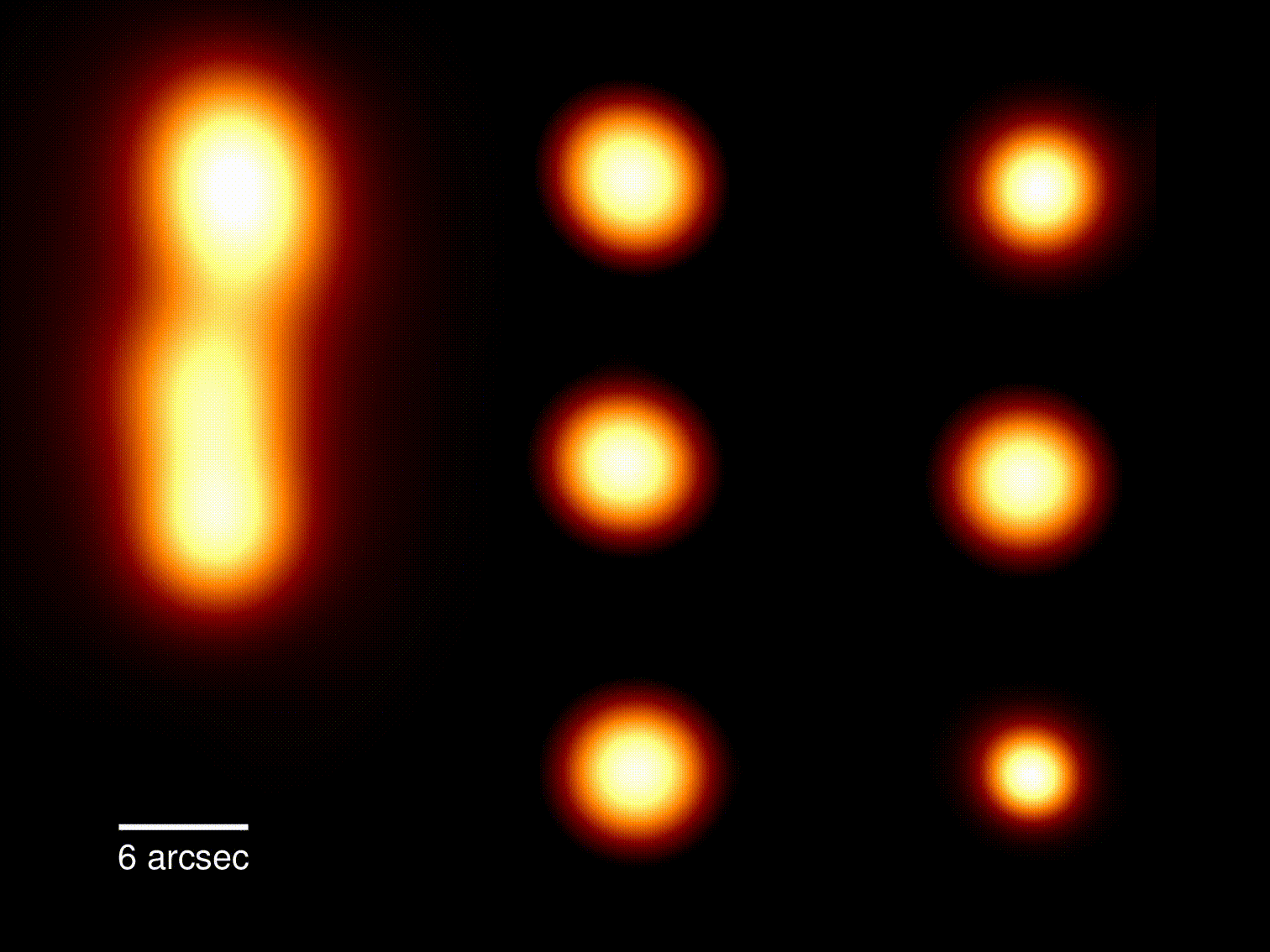
Real radio galaxies from Morabito et al. (2021). The gif fades from the standard resolution to the high resolution, showing the detail we can see by using the new techniques. Credit: L.K. Morabito; LOFAR Surveys KSP

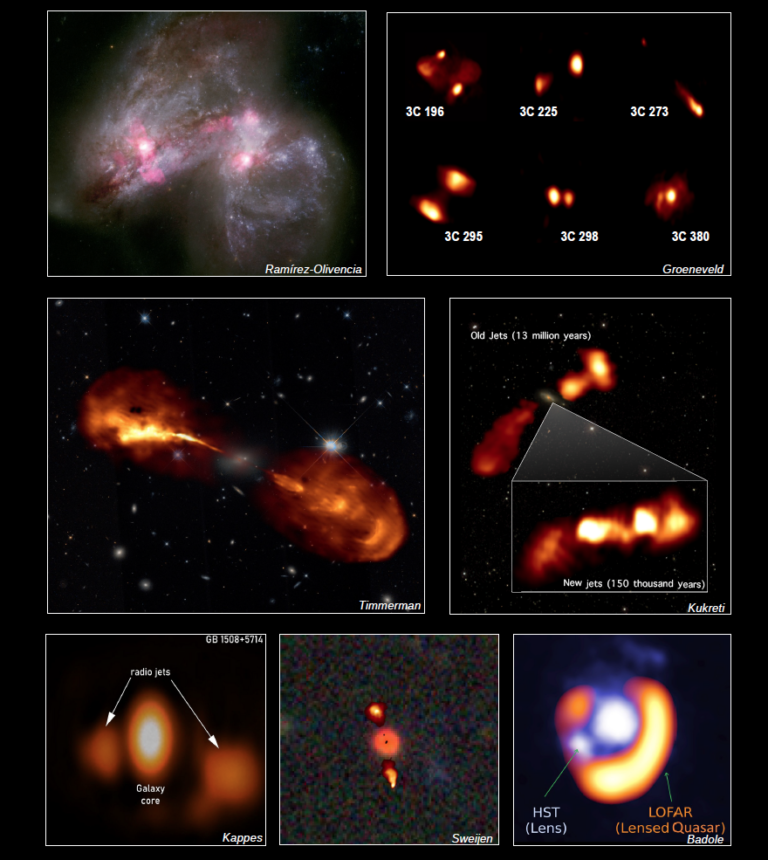
Sy 1 z=0.86
Sy 1 z=0.16
Sy 2 z=0.46
quasar z=1.43
Sy 1 z=0.69
radio z=0.58
z=2.43
quasar z = 4.30
APR 229 (interactive galaxies) z=0.0010
Hercules A Brightest galaxy in a Cluster, z=0.15
z = 3.2 quasar lensed by a galaxy at z= 0.35

Sy 1 z=0.86
Sy 1 z=0.16
Sy 2 z=0.46
quasar z=1.43
Sy 1 z=0.69
radio z=0.58
z=2.43
quasar z = 4.30
APR 229 (interactive galaxies) z=0.0010


Sy 1 z=0.86
Sy 1 z=0.16
Sy 2 z=0.46
quasar z=1.43
Sy 1 z=0.69
radio z=0.58
z=2.43
quasar z = 4.30
APR 229 (interactive galaxies) z=0.0010
Hercules A Brightest galaxy in a Cluster, z=0.15


Sy 1 z=0.86
Sy 1 z=0.16
Sy 2 z=0.46
quasar z=1.43
Sy 1 z=0.69
radio z=0.58
z=2.43
quasar z = 4.30
APR 229 (interactive galaxies) z=0.0010
Hercules A Brightest galaxy in a Cluster, z=0.15
z = 3.2 quasar lensed by a galaxy at z= 0.35

We know that galaxies evolve...
How?
- stars evolve (they are are born, grow up, die exploding or not),
- the structure of the Universe evolve
It means that the dust also evolves and the attenuation law is not constant
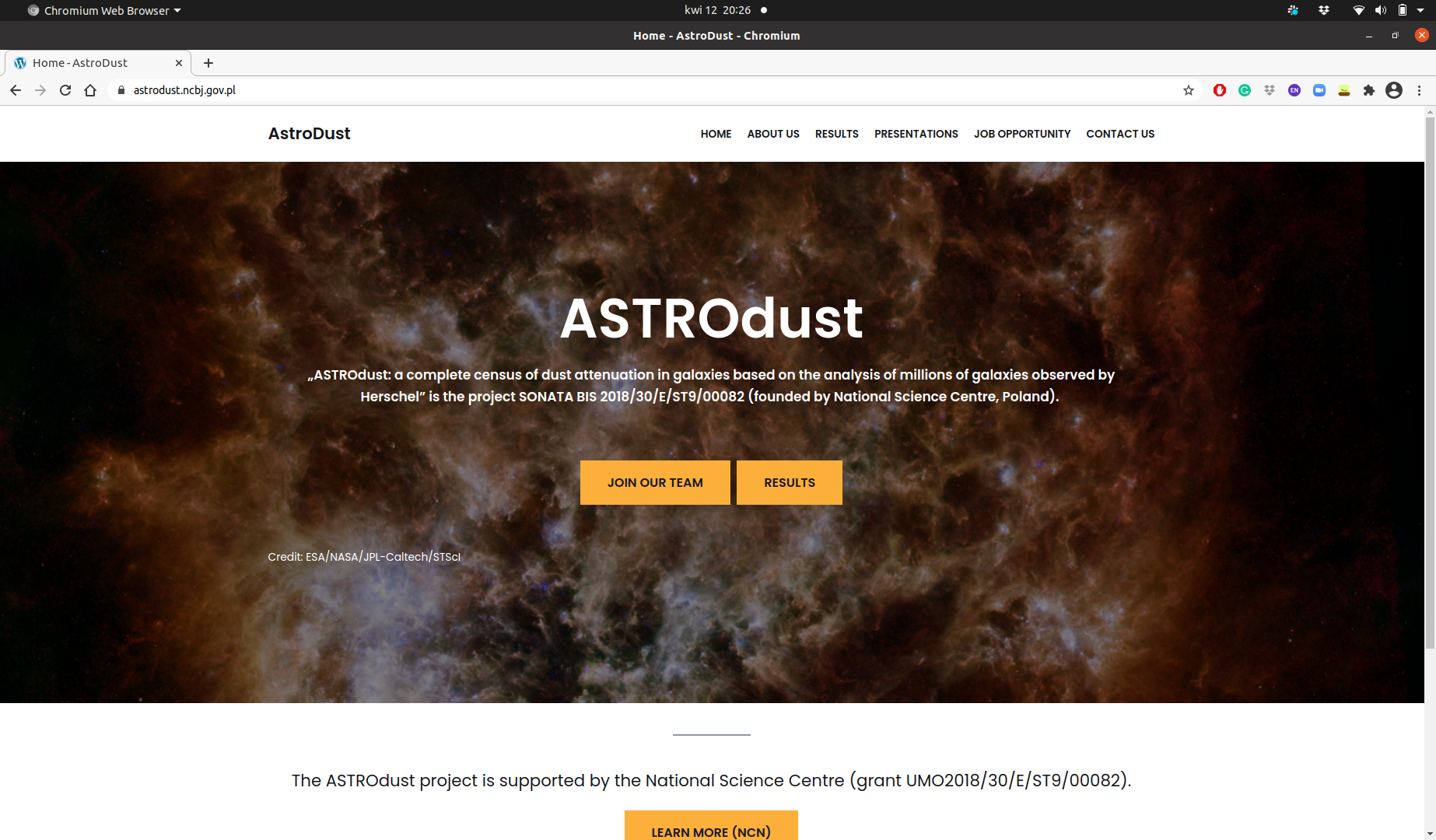
Thank you for your attention




The dust in the process of creating new stars
-
Hydrogen atoms meet and form molecules,
-
Gas raises the temperature and H starts moving too fast to form bonds,
- H atoms catch on dust grains -> bonds form on the dust surface and the foundations of the star are formed.
+ nearby stars emit hot and bright UV radiation, the dust cloud can act as a shield to protect future stars from breaking their chemical bonds.
Light shifted in the IR regime

http://www.stsci.edu/~dcoe/BPZ/sedanim.gif
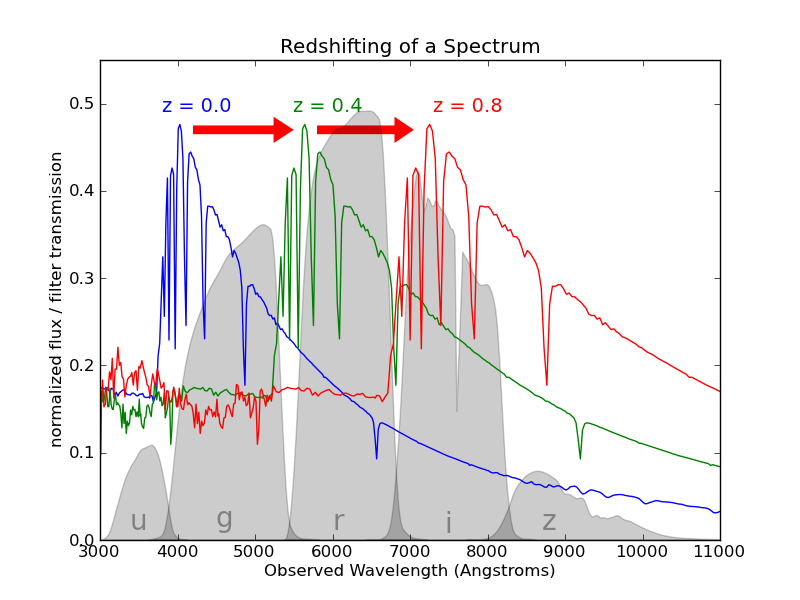
https://ogrisel.github.io/scikit-learn.org/